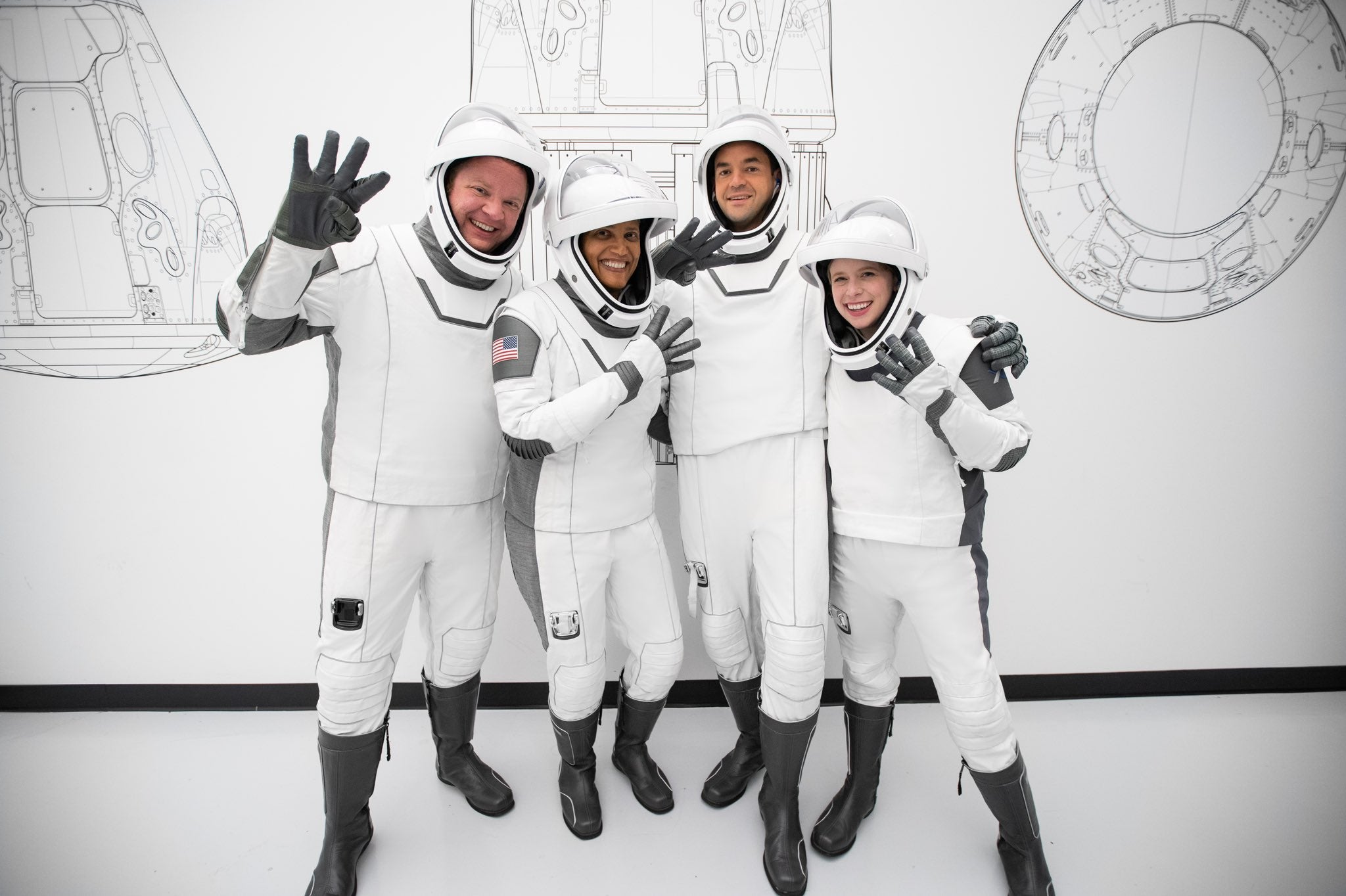Inspiration4: How the all-civilian crew trained for historic SpaceX mission to orbit
The crew will be heading to an orbit of 575 km above sea level – the highest any humans have gone into orbit

Your support helps us to tell the story
From reproductive rights to climate change to Big Tech, The Independent is on the ground when the story is developing. Whether it's investigating the financials of Elon Musk's pro-Trump PAC or producing our latest documentary, 'The A Word', which shines a light on the American women fighting for reproductive rights, we know how important it is to parse out the facts from the messaging.
At such a critical moment in US history, we need reporters on the ground. Your donation allows us to keep sending journalists to speak to both sides of the story.
The Independent is trusted by Americans across the entire political spectrum. And unlike many other quality news outlets, we choose not to lock Americans out of our reporting and analysis with paywalls. We believe quality journalism should be available to everyone, paid for by those who can afford it.
Your support makes all the difference.Zero gravity flights, mountain climbing exercises, and extensive 12-hour and 30-hour simulations aboard a version of the SpaceX Crew Dragon space capsule are some of the training undergone by the Inspiration4 crew to prepare for the historic first all-civilian mission to orbit on Wednesday, 8 PM EST.
While this will not be the first civilian trip to space - with billionaires Richard Branson and Jeff Bezos recently launching themselves and a few others into space on a brief trip with few minutes of weightlessness – the SpaceX mission differs in a major way that it will send regular people into orbit for three days.
When the crew launches on Wednesday, they will be heading to an orbit of 575 km above sea level which would be the highest any humans have gone into orbit since the servicing missions of the Hubble Space Telescope.
In comparison, the International Space Station (ISS) orbits the Earth at about 405 km above sea level.
To carry out this feat safely, the Inspiration4 all civilian crew has undergone a rigorous “astronaut training” needed for the historic mission.
All the crew members, including commander Jared Isaacman, flight’s medical officer Hayley Arceneaux, mission pilot Sian Proctor, and mission flight specialist Chris Sembroski received commercial astronaut training including lessons in orbital mechanics, operating in a microgravity, stress testing, emergency preparedness training, and mission simulations
“For many months, for 100s of hours, at SpaceX locations, they have been doing all kinds of training: They have studied over 90 different kinds of training guides and manuals and lessons to learn to fly Crew Dragon, and what to do under emergency situations,” a spokesperson noted in a live stream Q&A with the Inspiration4 crew.
“Something else they have done to prepare are simulations, or what we call Sims, It’s where the crew actually gets suited up, or whatever their appropriate attire would be during the phase of the flight they are in, and get into a simulator of a Dragon capsule with their comms on and have everything going,” SpaceX said.
In these simulations, the company said the mission operations team are also participants from their operations room, with the crew and “ground” team working together as an integrated unit during the Sims.
“They have done many many of these Sims. Infact, they even did a 12-hour and a 30-hour simulation - flight-like and end to end – making sure they are ready to go,” the spokesperson noted.
The crew has also spent their own time away from the SpaceX headquarters to study, taking quizzes and learning about protocols and systems breakdowns.
Inspiration4 organiser and funder, as well as commander of the mission, Isaacman, reportedly also planned extracurricular activities for the crew, like a climb up Mount Rainier.
“For me, probably the most daunting [training experience] was climbing Mount Rainier. That was one of our first crew-bonding experiences where we got to know each other really well quickly as we hiked for almost 10 hours up the mountain and spend 3 days on the mountain,” Ms Arceneaux said during the press briefing.
“It definitely showed us that we could get through anything together,” she added.
In their simulated missions at the SpaceX headquarters, the crew also reportedly ate what they would eat in space and also had to sit through a simulated launch delay caused by unsuitable weather as mission controllers kept an eye on them.
“From the time this mission was announced, to where we are today, we’ve just been going supersonic, with one training event after the next. A number of these are life-changing experiences in their own right in quick succession,” Mr Isaacman said in the press briefing.
Even though the cost of such missions does remain high, and there’s a strict need for prospective passengers to devote time and train specifically for missions, Inspirtion4 could signal the dawn of orbital space tourism, the company believes.
“I am the mission pilot. It is special for me to hold that title because I am going to be the first black female pilot of a space craft,” Dr Proctor said in the interview.
“There have been three black female astronauts who have been to space and knowing that I am going to be the fourth means that I have the opportunity to not only accomplish my dream but also inspire the next generation of women of colour and girls of colour and get them to think about reaching for the stars,” she added.
Join our commenting forum
Join thought-provoking conversations, follow other Independent readers and see their replies
Comments